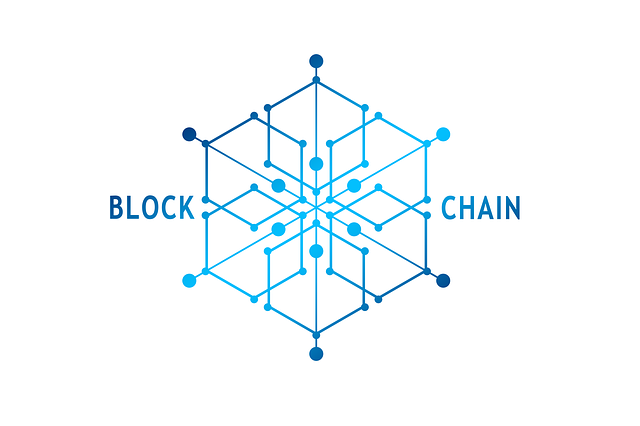Table of Contents
Understanding Digital Currency
Digital currency refers to a form of currency that exists purely in digital or electronic form. It is not physical like traditional coins or banknotes, but rather exists in a digital ledger maintained by a network of computers. Transactions involving digital currency are recorded and verified using cryptographic techniques, ensuring security and privacy. Bitcoin, Ethereum, and Ripple are examples of popular digital currencies that leverage blockchain technology for their operation.
The value of digital currency is determined by supply and demand dynamics in the market. Unlike fiat currencies issued by governments, digital currencies are decentralized and not controlled by any central authority. Users can send and receive digital currency directly without the need for intermediaries like banks or payment processors, leading to lower transaction fees and faster settlement times. As the adoption of digital currency continues to grow, it is reshaping the way we perceive and use money in an increasingly digitized world.
What is Blockchain Technology?
Blockchain technology is a decentralized and distributed ledger that records transactions across a network of computers. Each transaction is stored in a block that is linked to the previous one, forming a chain of blocks. The information in these blocks is secure, transparent, and immutable, making it difficult for any single entity to manipulate the data.
One key feature of blockchain technology is its use of cryptographic algorithms to ensure the security and integrity of transactions. This means that each transaction is verified by multiple participants in the network, known as nodes, before being added to the blockchain. This process helps to prevent fraud, tampering, and unauthorized changes to the data stored on the blockchain.
How Does Blockchain Work?
Blockchain technology operates on a decentralized network wherein transactions are recorded in a chronological and immutable manner. The process begins with a user initiating a transaction that is then verified by multiple nodes across the network. Upon verification, the transaction data is organized into a block, which is appended to the existing chain of blocks, thus forming a blockchain. Each block contains a unique cryptographic hash that links it to the previous block, creating a chain that ensures data integrity and security.
The consensus mechanism, often achieved through protocols like Proof of Work or Proof of Stake, plays a crucial role in validating transactions and maintaining the integrity of the blockchain network. With Proof of Work, miners compete to solve complex mathematical puzzles to validate transactions and add new blocks to the chain, while Proof of Stake involves validators who are chosen to create new blocks based on their stake in the network. These mechanisms contribute to the trustworthiness and transparency of blockchain transactions, making it a reliable platform for various applications beyond cryptocurrencies.
The Role of Miners in Blockchain
Miners play a crucial role in maintaining the integrity and security of blockchain networks. Their primary task is to validate transactions by solving complex mathematical puzzles, a process known as mining. Miners compete with each other to be the first to solve these puzzles and add a new block of transactions to the blockchain. This process not only secures the network but also ensures that transactions are legitimate and cannot be tampered with.
Through their computational power and participation in the consensus mechanism, miners help create trust in the blockchain network. By committing their resources to validate transactions and secure the network, miners are rewarded with incentives such as transaction fees and newly minted cryptocurrencies. This incentivizes miners to continue supporting the blockchain network and ensures its continued operation and security. Overall, miners are an indispensable part of the blockchain ecosystem, working diligently to maintain the decentralized and transparent nature of blockchain technology.
Securing Transactions with Cryptography
Cryptography plays a pivotal role in ensuring the security and privacy of transactions in blockchain technology. By encrypting data using complex algorithms, cryptographic techniques provide a high level of protection against unauthorized access. Each transaction is secured with a unique digital signature, which verifies the authenticity of the sender and ensures the integrity of the data being transferred.
Furthermore, cryptographic hash functions are utilized to create a digital fingerprint of each block in the blockchain. This fingerprint is unique to the content of the block and is crucial for maintaining the immutability of the ledger. Any alteration to the data within a block would result in a completely different hash value, making it evident that the information has been tampered with. In essence, cryptography acts as a shield that fortifies the walls of blockchain networks, safeguarding transactions from malicious actors and potential security breaches.
Decentralization in Blockchain Technology
Decentralization in blockchain technology is a fundamental principle that sets it apart from traditional centralized systems. By distributing data across a network of computers rather than storing it in a central server, blockchain ensures greater transparency and security. This decentralized approach eliminates the need for intermediaries or central authorities, allowing for peer-to-peer transactions that are directly validated by the network participants.
The concept of decentralization in blockchain technology also promotes resilience and reduces the risk of a single point of failure. With no central point that can be targeted for hacking or manipulation, blockchain networks are inherently more secure and robust. This distributed system empowers users to have greater control over their data and transactions, fostering a more democratic and trustless environment in the digital realm.
Benefits of Blockchain Technology
Blockchain technology offers numerous advantages that can revolutionize various industries. One key benefit is the enhanced security provided by blockchain’s decentralized and immutable nature. This ensures that data stored on the blockchain is secure, transparent, and tamper-proof, reducing the risk of fraud, hacking, and unauthorized access.
Moreover, blockchain technology promotes increased efficiency and cost savings by eliminating the need for intermediaries in transactions. By enabling direct peer-to-peer interactions and automating processes through smart contracts, blockchain streamlines operations and reduces transaction costs. This can lead to faster processing times, lower fees, and enhanced trust among parties involved in the exchange of assets or information.
Challenges and Limitations of Blockchain
Blockchain technology, while revolutionary in many aspects, faces several challenges and limitations that hinder its widespread adoption. One major issue is scalability, as the current infrastructure struggles to handle a high volume of transactions efficiently. This bottleneck results in increased transaction times and higher costs, making it less practical for everyday use. Additionally, the energy-intensive process of mining in blockchain networks raises concerns about its environmental impact, leading to criticisms about sustainability and resource consumption.
Another significant challenge is the issue of interoperability among different blockchain platforms. The lack of uniform standards and protocols makes it difficult for different networks to communicate with each other seamlessly. This fragmentation limits the potential applications of blockchain technology and reduces its overall effectiveness. Moreover, the complex nature of blockchain regulations and compliance adds another layer of complexity, creating barriers to adoption and hindering its integration into existing legal frameworks.
Smart Contracts and Blockchain
Smart contracts are self-executing agreements with the terms of the contract directly written into code. Once conditions specified in the code are met, the contract automatically executes and enforces the agreement. Smart contracts eliminate the need for intermediaries, streamlining processes, reducing costs, and increasing transparency in transactions.
Blockchain technology is the underlying platform that enables smart contracts to function seamlessly. By leveraging the secure and decentralized nature of blockchain, smart contracts ensure immutability and tamper-proof execution of agreements. The integration of smart contracts with blockchain technology is revolutionizing industries by providing a more efficient and secure way to conduct business transactions.
Blockchain in Various Industries
The integration of blockchain technology across various industries has shown promising results in terms of enhancing transparency, security, and efficiency. Sectors such as supply chain management have leveraged blockchain to track the flow of goods from manufacturer to consumer, ensuring authenticity and reducing the risk of counterfeit products. Moreover, healthcare institutions have utilized blockchain to securely store and share patient data, enabling seamless collaboration among healthcare providers while maintaining patient privacy and data integrity.
Financial services have also embraced blockchain technology to streamline processes like cross-border payments, trade finance, and identity verification. The use of smart contracts on blockchain platforms has automated transaction mechanisms, reducing the need for intermediaries and enhancing the speed of transactions. Additionally, industries like real estate have started exploring blockchain for property transactions, digitizing assets, and ensuring transparent and immutable records of ownership and transfers.
Popular Cryptocurrencies Using Blockchain
Bitcoin, the first and most well-known cryptocurrency, operates on a blockchain network. Launched in 2009 by an anonymous person or group known as Satoshi Nakamoto, Bitcoin is based on a decentralized system that enables peer-to-peer transactions without the need for intermediaries. The blockchain technology underlying Bitcoin ensures transparency and security by recording all transactions in a public ledger that is maintained by a network of miners.
Another popular cryptocurrency utilizing blockchain technology is Ethereum. Created by Vitalik Buterin in 2015, Ethereum is not just a digital currency but a platform for building decentralized applications and smart contracts. The Ethereum blockchain allows developers to create and deploy applications without the risk of downtime, fraud, or interference from third parties. Its native cryptocurrency, Ether, is used to facilitate transactions on the network and execute smart contracts written on the Ethereum Virtual Machine.
Regulations and Compliance in Blockchain
Blockchain technology has brought about a paradigm shift in the traditional financial landscape, challenging regulators to adapt swiftly to its decentralized nature. With digital currencies gaining momentum, regulatory bodies worldwide are striving to strike a balance between fostering innovation and safeguarding investors. Ensuring compliance with anti-money laundering (AML) and Know Your Customer (KYC) regulations remains paramount to mitigate the risks associated with illicit activities in the blockchain realm.
The dynamic nature of blockchain technology presents a unique set of challenges for regulators striving to develop comprehensive frameworks. Jurisdictions are continuously evolving their regulatory approaches to address concerns such as consumer protection, privacy, and data security. Collaborative efforts between regulators, industry stakeholders, and policymakers are imperative to cultivate a conducive regulatory environment that promotes innovation while upholding integrity and compliance standards within the blockchain ecosystem.
• Regulators worldwide are adapting to the decentralized nature of blockchain technology
• Balancing innovation and investor protection is a key focus for regulatory bodies
• Compliance with AML and KYC regulations is crucial in mitigating risks in the blockchain space
• Developing comprehensive regulatory frameworks for blockchain poses challenges due to its dynamic nature
• Jurisdictions are evolving their approaches to address concerns such as consumer protection, privacy, and data security
• Collaboration between regulators, industry stakeholders, and policymakers is essential for fostering innovation while upholding compliance standards
Future Trends in Blockchain Technology
As the blockchain technology continues to evolve, one of the key future trends expected to shape its development is the integration of artificial intelligence (AI). By combining blockchain with AI capabilities, companies can enhance the automation of processes, improve data analysis, and streamline decision-making. This integration has the potential to revolutionize various industries, from finance to healthcare, by enabling more efficient and secure transactions.
Another significant future trend in blockchain technology is the rise of tokenization. Tokenization refers to the process of converting assets, such as real estate or fine art, into digital tokens on the blockchain. This trend has the potential to democratize access to investment opportunities, facilitate fractional ownership of high-value assets, and improve liquidity. As tokenization gains traction, we can expect to see increased innovation in the way assets are represented and traded on blockchain networks.


